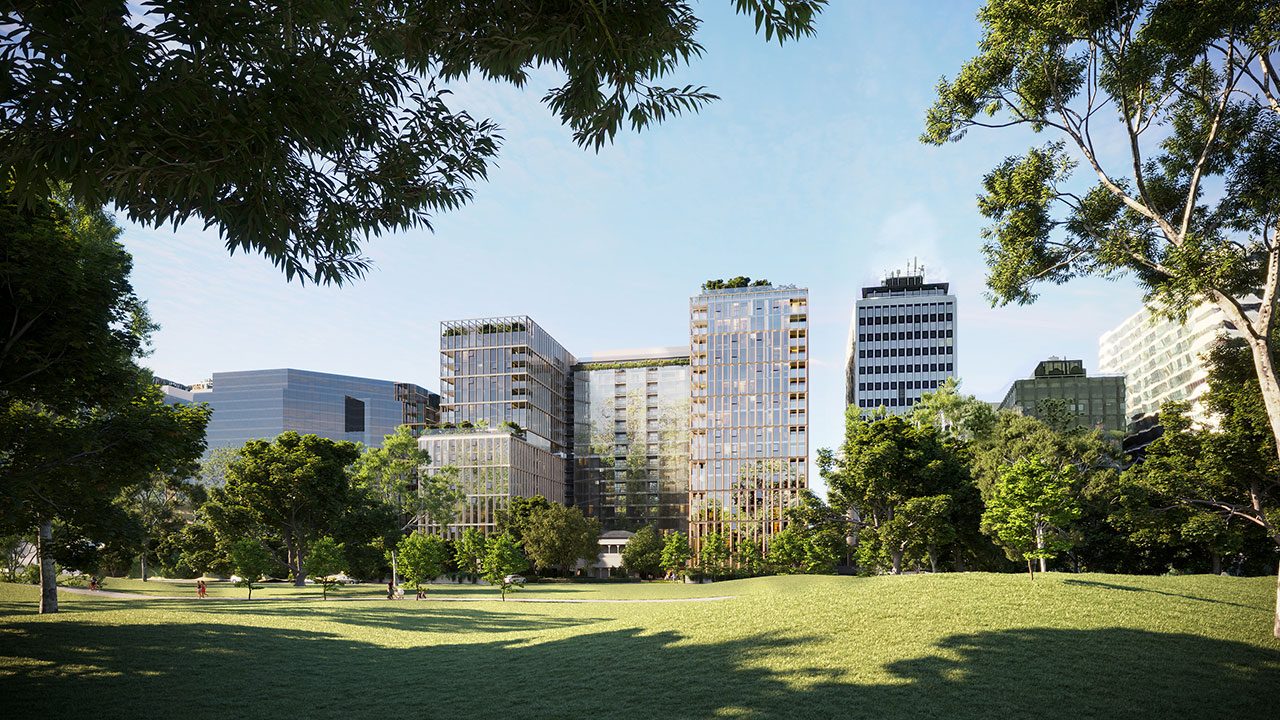This article is from the Australian Property Journal archive
AMID a national rental crisis, Melbourne’s build-to-rent market is set to grow again with Daniel Grollo’s Home platform, backed by Singapore’s sovereign wealth fund GIC, buying the Bayview Eden Hotel on the city fringe for about $80 million, where it plans to build 560 apartments.
Home has raised about $2.5 billion for a pipeline of 5,000 apartments in Australia’s nascent build-to-rent sector, which is so far largely centred around inner Melbourne.
The latest project will offer a mix of studio one, two and three-bedroom apartments at a range of price points, as well as a ground floor café in the adjoining 19th century mansion, Netherby.
Currently, the 4-star Bayview Eden occupies a significant 6,974 sqm site at 6-9 Queens Road – the second-largest landholding in the precinct – and currently comprises 192 rooms, a restaurant and bar, extensive conferencing & event facilities, swimming pool and large basement car park, together with Netherby. It was offered to the market nearly a year ago by Bayview International Hotels & Resorts, a subsidiary of Malaysian company Oriental Holdings, following its sale of the nearby abandoned Bayview on Park at 50-52 Queens Road for $72.7 million to Altis Property Partners and Aware Super, also for a build-to-rent development.
JLL’s Josh Rutman, Peter Harper, Nick MacFie and MingXuan Li managed the Bayview Eden sale.
Melbourne dominates Australia’s build-to-rent pipeline, accounting for around 63% of supply, according to JLL. Home has among the largest pipeline of the major institutional players, joined by Mirvac and Greystar, each with inner city project. Investa and Oxford have kicked off construction on more than 1,000 central Melbourne apartments, while developer Samma Property Group has just been given the green light for a $250 million tower on the Yarra River, next to the Bolte Bridge in Docklands, slated to be part of a $1.7 billion build-to-rent portfolio.
Gurner and Hines also have sizable Melbourne pipelines.
Rutman said that despite being in the midst of a well-documented housing shortage, and amid the call for more construction, there has been “no shortage of hurdles for developers and their financiers to jump over”.
“Whilst it’s not a silver bullet, build-to-rent developers are a cohort that is capable of commencing construction sooner and the calls for smoother approval processes and more conducive tax treatment seem to be well-founded.”
Bringing the tax policy for managed investment trusts in line with other institutional asset classes could help inject up to 350,000 new build-to-rent apartments into Australia’s housing supply, according to a new study by EY, commissioned by the Property Council of Australia. Labor, whilst in opposition under Bill Shorten, committed to reform MIT, but Prime Minister Anthony Albanese’s government has not indicated it will pursue those changes.
State governments across the eastern seaboard have been introducing tax concessions.
$15.85m earmarked for BTR amid rental crisis
Australia’s build-to-rent sector is to benefit from an increase in “forward funding” and a boost in foreign investment, with around 40,000 apartments either completed or in the pipeline according to a new report from Savills.
Savills’ analysis shows that the number of institutional funds targeting Australian residential property has grown significantly over the past 18 months. The amount of institutional capital already raised, allocated or in process of being raised for build-to-rent is currently in excess of $15.85 billion.
Among that is $1.5 billion partnership between Sentinel Dutch pension fund manager PGGM to develop and manage communities across Australia.
Setting a precedent for the Australian market, forward funding has been an integral part of build-to-rent expansion in the United Kingdom, with 75% of investment in the past five years coming via this route. About £1 billion was delivered to forward fund developments the December quarter.
“Assuming that this $15.85 billion in capital is leveraged with debt, this could potentially support the delivery of 52,800 new homes by 2028,” said Paul Savitz, director operational capital markets at Savills.
“Increased investment from both global and domestic capital is needed to make a palpable difference to housing supply and tackling the inefficiency of taxes and planning could amplify the potential of Australian multifamily.”
Australia is suffering under the strain of a national rental crisis. Housing vacancy rates across Australia’s capital cities are at a record low amid a chronic undersupply of properties, and the market is set to come under further demand pressures with accelerated rental increases, and record migration levels continuing into the next financial year.
JLL data shows a growing interest in Brisbane’s market, with Lendlease this year announcing it would finally make its entrance into the local BTR market with a 443-residence project at Brisbane Showgrounds. The challenges of making projects work in Sydney are reflected in a lower share of the pipeline.
Adelaide is poised to have its first institutional build-to-rent project, with US development and real estate management firm Sentinel in recent weeks agreeing to take on 4,000 sqm of land within Renewal SA’s Bowden precinct.





